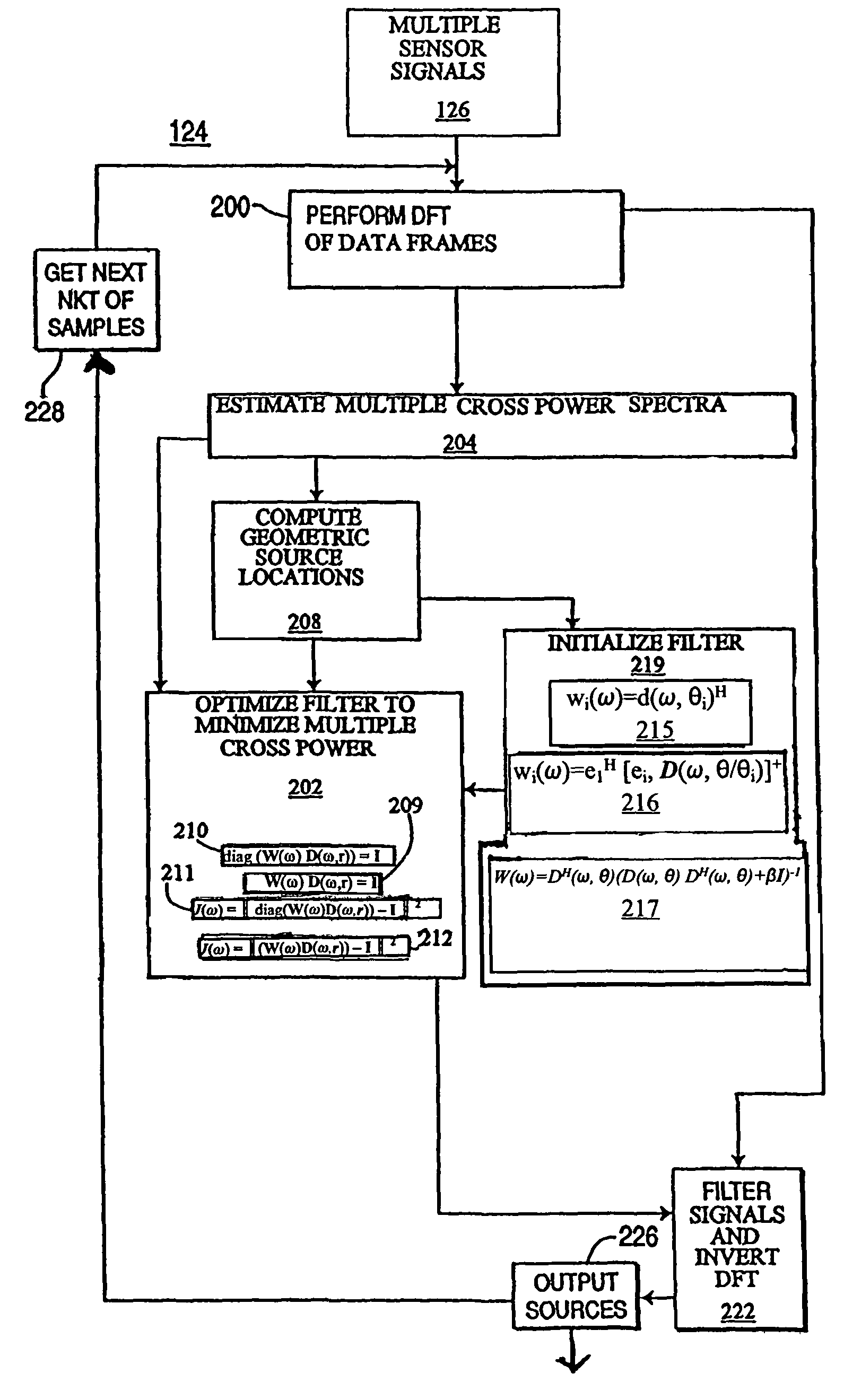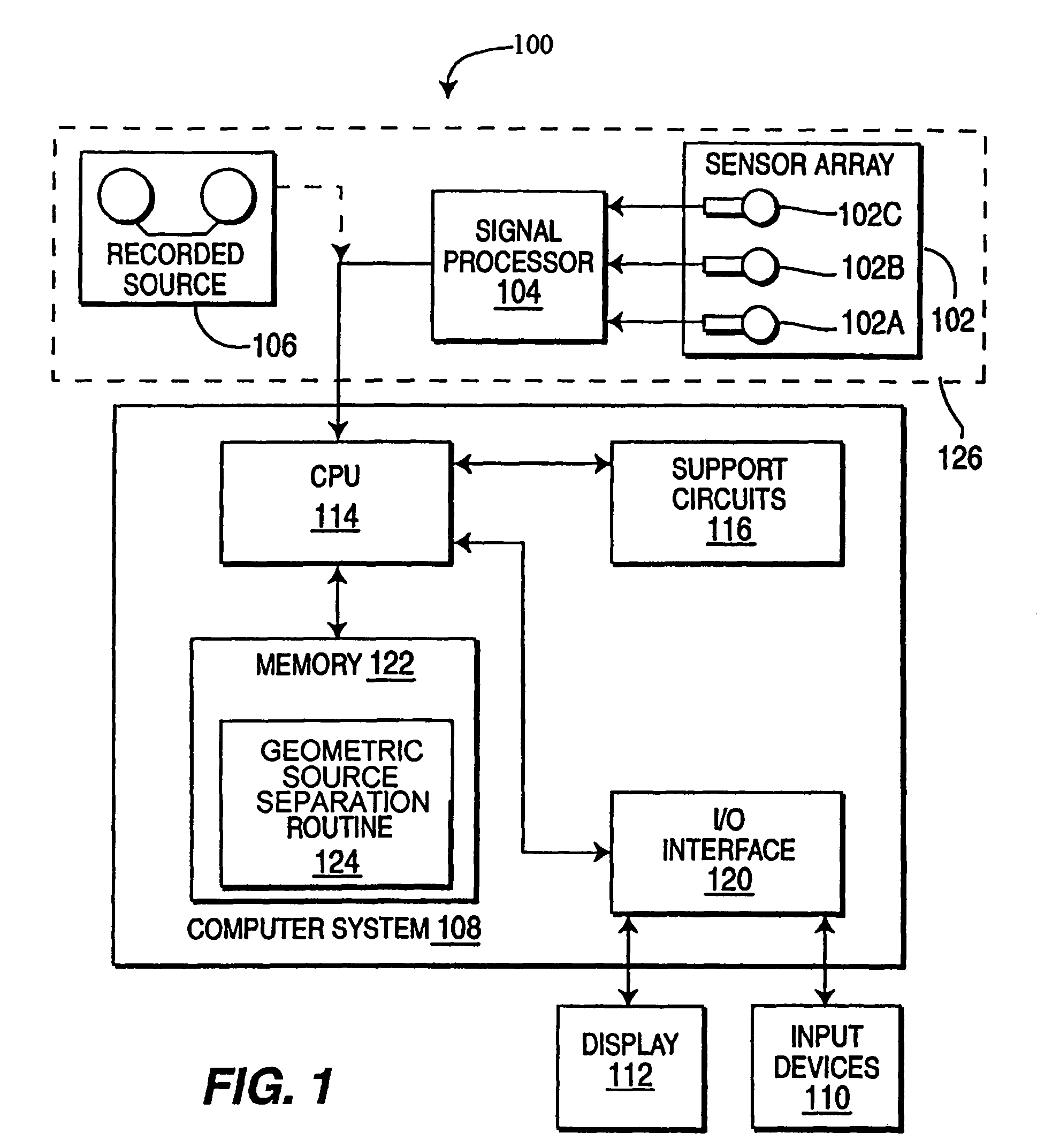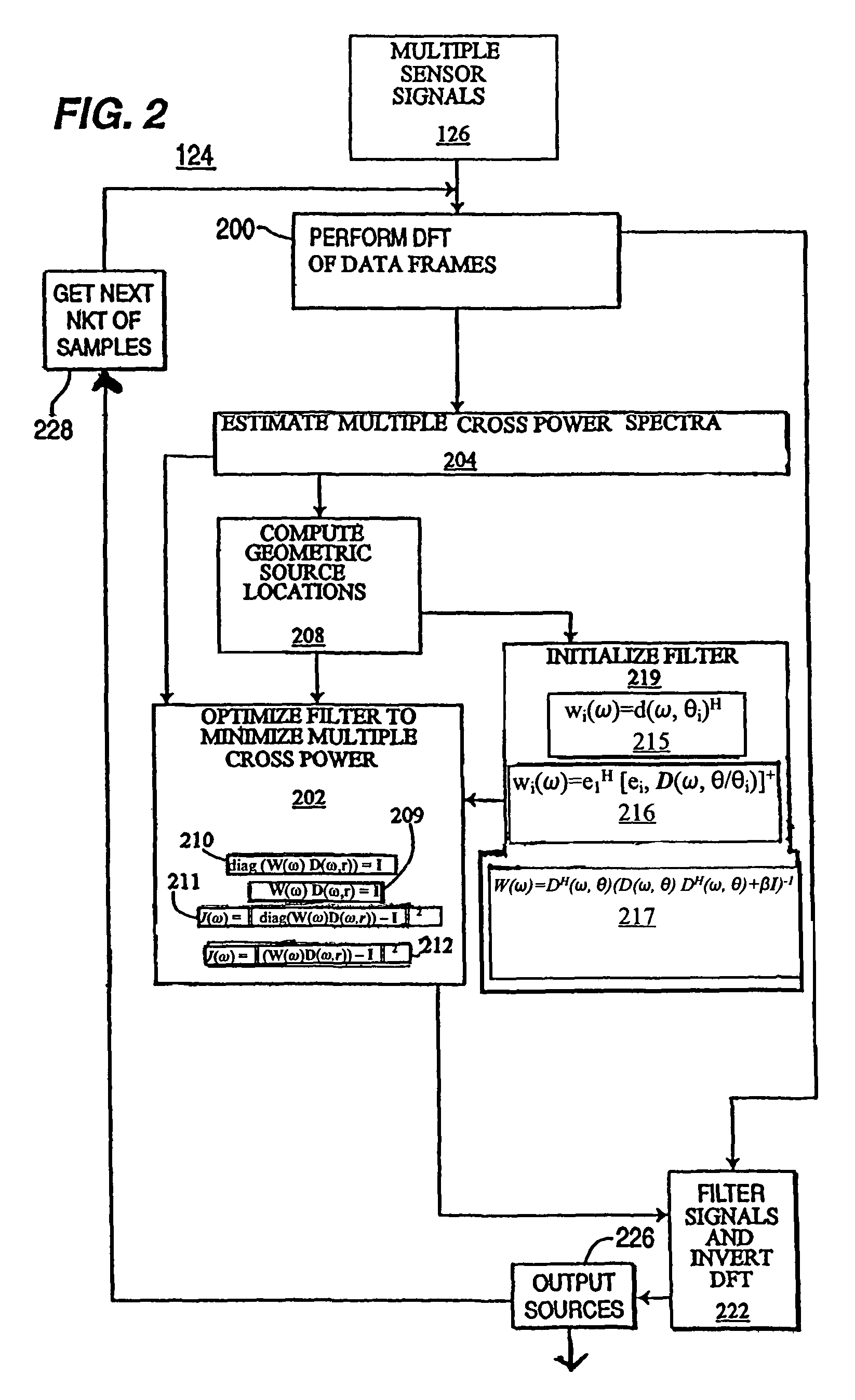Geometric source separation signal processing technique
- Summary
- Abstract
- Description
- Claims
- Application Information
AI Technical Summary
Benefits of technology
Problems solved by technology
Method used
Image
Examples
Embodiment Construction
[0023]The present invention estimates values of W(ω) obtained by known blind source separation techniques by making geometric assumptions regarding the signal sources. The sources are assumed to be localized at least up to the spatial resolution of a given array. The invention assumes that signals originate from the same locations for the entire frequency spectrum, permitting the formulation of geometric constraints on the filter coefficients. Different geometric constraints are introduced leading to a class of Geometric Source Separation algorithms.
[0024]FIG. 1 depicts a system 100 for implementing the source separation method of the present invention. The system 100 comprises a composite signal source 126 that supplies the signal that is to be separated into its component signals and a computer system 108 that executes the geometric source separation routine of the present invention. The source 126 may contain any source of composite signals, but is illustratively shown to contain...
PUM
 Login to View More
Login to View More Abstract
Description
Claims
Application Information
 Login to View More
Login to View More - R&D Engineer
- R&D Manager
- IP Professional
- Industry Leading Data Capabilities
- Powerful AI technology
- Patent DNA Extraction
Browse by: Latest US Patents, China's latest patents, Technical Efficacy Thesaurus, Application Domain, Technology Topic, Popular Technical Reports.
© 2024 PatSnap. All rights reserved.Legal|Privacy policy|Modern Slavery Act Transparency Statement|Sitemap|About US| Contact US: help@patsnap.com










